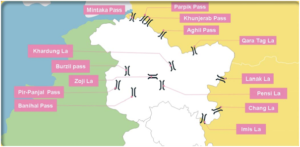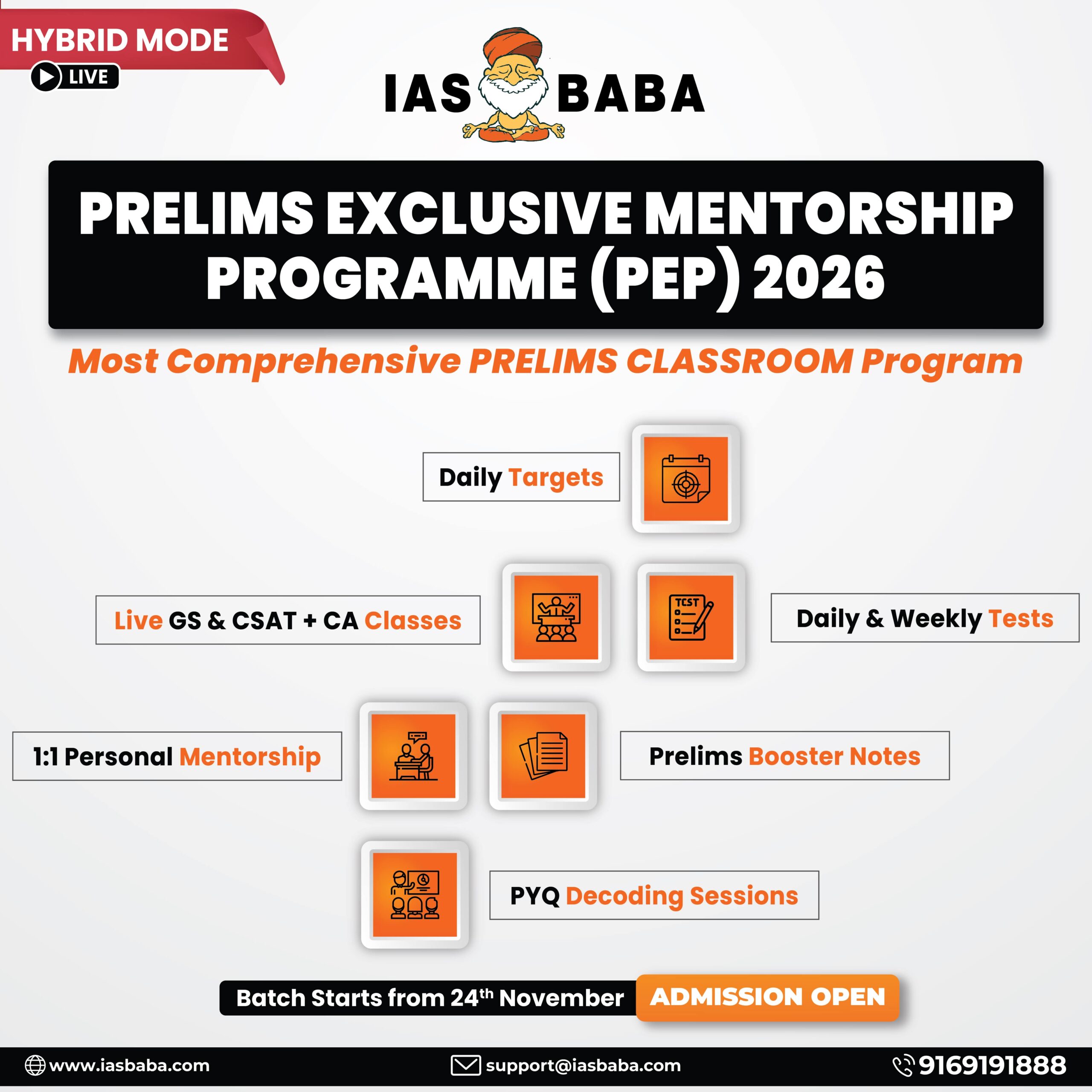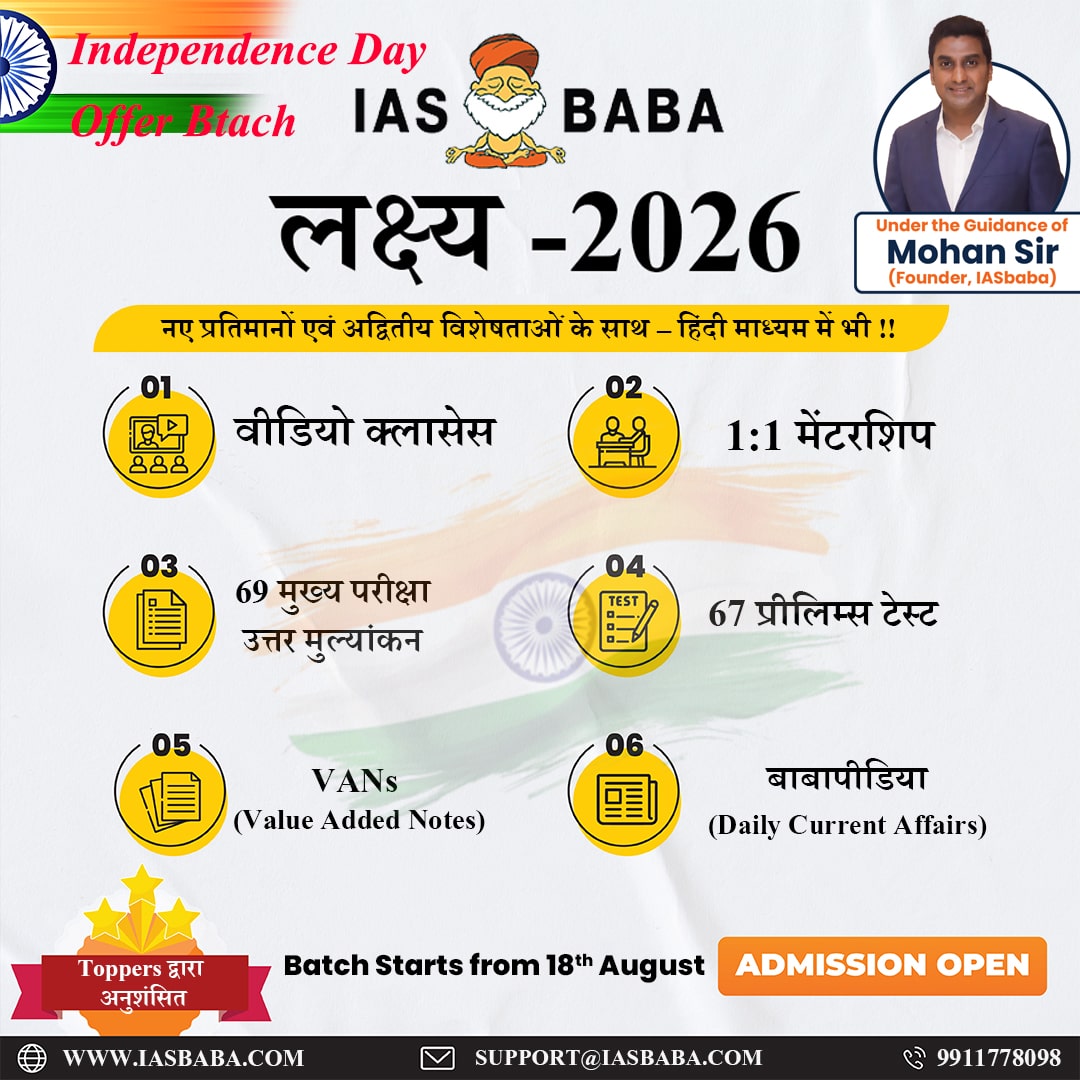IASbaba's Daily Current Affairs Analysis
Archives
(PRELIMS & MAINS Focus)
Category: POLITY
Context: Under the Swachh Bharat Mission-Urban, Ghaziabad has taken a landmark step by successfully issuing India’s first Certified Green Municipal Bond, raising ₹150 crore for the development of a cutting-edge Tertiary Sewage Treatment Plant (TSTP).
Decoding the context: The Green Municipal Bond marked a new chapter in India’s financial landscape, providing a sustainable model for funding urban infrastructure.
Learning Corner:
- Green Municipal Bonds (GMBs) are debt instruments issued by urban local bodies (ULBs) to fund environmentally sustainable and climate-resilient infrastructure projects (e.g., water treatment, renewable energy, waste management).
- Regulatory Framework:
- Regulated under SEBI (Issue and Listing of Municipal Debt Securities) Regulations, 2015.
- Issuers must:
- Have no negative net worth in the past 3 financial years
- Have no default in loan repayments in the past year
- Obtain project-specific third-party green certification (e.g., from Climate Bonds Initiative, CARE Ratings)
India’s First Certified Green Municipal Bond
- Issuer: Ghaziabad Nagar Nigam (GNN), under Swachh Bharat Mission-Urban (SBM-U).
- Certified By: Climate Bonds Initiative (CBI)
- Details: Issued in 2021, raised ₹150 crore at 8.1% coupon rate; listed on BSE bond platform.
- Purpose: Funded a Tertiary Sewage Treatment Plant (TSTP) with 40 MLD capacity, serving 1,400+ industrial units via a 95 km pipeline network.
- Financial Model: Public-Private Hybrid Annuity Model (PPP-HAM), with 40% municipal funding.
- Impact: Supplies 9.5 MLD treated water to 800+ firms.
- Significance: First certified GMB in India; demonstrates financial discipline, supports SBM-U’s goal of garbage-free cities by 2026.
Source : PIB
Category: ENVIRONMENT
Context: The government launched a green hydrogen certification scheme for producers.
Decoding the context: Renewable energy minister Pralhad Joshi said the scheme is a step towards creating a framework for certifying green hydrogen production and ensuring transparency, traceability and market credibility.
Learning Corner:
- Green hydrogen is a carbon-free fuel produced via electrolysis, splitting water into hydrogen and oxygen using electricity from renewable sources (e.g., solar, wind).
- Significance:
- Decarbonization: Reduces CO₂ emissions in industries like steel, transport, and fertilizers; India aims for 5 MMT annual production by 2030 (National Green Hydrogen Mission, NGHM).
- Energy Security: Cuts fossil fuel imports (₹1 lakh crore savings projected by 2030).
- Economic Growth: NGHM targets ₹8 lakh crore investments, 6 lakh jobs by 2030.
Green Hydrogen Certification Scheme (GHCS)
- Objective: Establishes a framework to certify green hydrogen production, ensuring transparency, traceability, and market credibility.
- Scope of Certification
- Covers: Production stages up to compression and purification of hydrogen.
- Excludes: Transportation, storage beyond plant boundaries, and conversion into derivatives like green ammonia
- Key Features:
- Applies to: Green hydrogen producers availing government incentives under the National Green Hydrogen Mission (NGHM).
- Excludes: Exporters not utilizing government incentives.
- Hydrogen is “green” if emissions are ≤2 kg CO₂e/kg (12-month average).
- Nodal Agency: Bureau of Energy Efficiency accredits certifying agencies.
| Type of Hydrogen | Production Method | Environmental Impact |
| Green Hydrogen | Electrolysis of water using renewable energy (solar, wind) | Zero-emission |
| Grey Hydrogen | Produced from natural gas or methane via steam methane reforming (SMR) | High CO₂ emissions |
| Blue Hydrogen | Same as grey, but with carbon capture and storage (CCS) technology | Lower emissions, but not zero |
| Brown/Black Hydrogen | From coal or lignite gasification | Most polluting |
| Pink Hydrogen | Electrolysis powered by nuclear energy | Low carbon (depends on nuclear source) |
| Turquoise Hydrogen | Produced via methane pyrolysis (splits CH₄ into H₂ and solid carbon) | Still under development; cleaner but technology is nascent |
| Yellow Hydrogen | Electrolysis using grid electricity (mixed source, not fully renewable) | Emissions depend on the grid mix |
| White Hydrogen | Naturally occurring geological hydrogen (rare and not commercially viable yet) | Potential future source |
Source : Economic Times
Category: GEOGRAPHY
Context: With the early opening of the Zojila Pass, the Siachen base camp is now open to tourists.
Decoding the context: visitors will no longer need prior authorisation or a no-objection certificate (NOC) to access the base camp.
Learning Corner:.

- Zojila Pass (also Zoji La) is a high-altitude mountain pass in the Himalayas, located in Kargil district, Ladakh, at 3,528 meters (11,575 ft) above sea level.
- Connects Kashmir Valley (Srinagar) with Drass and Indus valleys (Leh) via National Highway 1; second-highest pass after Fotu La on this route.
- Lies on the western section of the Greater Himalayas.
- Strategic lifeline for Ladakh, supporting military logistics and civilian connectivity.Vital for troop deployment to Siachen and eastern Ladakh.
- Challenges: Heavy snowfall closes the pass for 4-6 months annually (typically November-April); avalanches, landslides, and extreme weather (-30°C) pose risks.
- The Zojila Tunnel Project is under construction to provide all-weather connectivity:
- Will be Asia’s longest bi-directional tunnel (14.2 km).
- Aims to reduce travel time between Sonamarg and Drass from 3.5 hours to just 15 minutes.
Source : Economic Times
Category: ECONOMY
Context: Prime Minister Modi inaugurated the World Audio Visual and Entertainment Summit (WAVES) 2025 at the Jio World Convention Centre in Mumbai, calling it a transformative platform that unites creators, storytellers, innovators, and policymakers from around the world.
Decoding the context: The current era marks the sunrise era of the ‘Orange economy’ in India, the Prime Minister said adding that the three pillars of the Orange economy are content, creativity and culture.
Learning Corner:
- The Orange Economy, also known as the Creative Economy, refers to the sector of the economy that involves creative industries that generate economic value through creativity, cultural knowledge, and intellectual property.
- Key Components:
- Arts (performing and visual)
- Music and film industry
- Publishing and media
- Design, fashion
- Architecture
- Cultural heritage and tourism
- Software, video games, and digital content
Significance:
- Job Creation: Offers large-scale employment, especially for youth.
- Innovation: Encourages entrepreneurship and innovation.
- Cultural Preservation: Promotes national identity and cultural diversity.
- Sustainability: Less resource-intensive compared to traditional industries.
- Gender Inclusion: High participation of women in many creative sectors.
India’s Context (2025)
- Economic Contribution: Contributes $30 billion to India’s GDP, employing 8% of the workforce; creative exports at $11 billion annually.
- Global Reach: Indian films screened in 100+ countries; OTT industry grew 10x in recent years (PM Modi, WAVES 2025).
- WAVES 2025 Summit: Held in Mumbai (May 1-4, 2025), hosted 10,000 delegates from 90+ countries. PM Modi emphasized “Create in India, Create for the World,” highlighting the orange economy’s potential to boost GDP.
- Government Initiatives: $1 billion creative economy fund announced; Indian Institute of Creative Technology (IICT) to be set up in Mumbai with ₹400 crore allocation.
Source : Livemint
Category: GOVERNMENT SCHEMES
Context: Union Jal Shakti Minister reviewed the government’s flagship Jalaj initiative.
Decoding the context: Government-backed Jalaj project links river conservation with livelihoods, empowering thousands across India’s major river basins.
Learning Corner:
- The Jalaj Initiative is a flagship program under the National Mission for Clean Ganga (NMCG), implemented by the Wildlife Institute of India (WII).
- It aims to establish a symbiotic relationship between rivers and people by integrating aquatic biodiversity conservation with sustainable livelihood generation.
- This initiative aligns with the broader vision of Arth Ganga, which seeks to promote a river-centric economic model that balances ecological preservation with economic development.
Key Objectives of the Jalaj Initiative
- Linking Livelihoods with Conservation: Engage local communities in the conservation of the Ganga River basin by connecting their livelihoods with aquatic biodiversity preservation.
- Establishment of Jalaj Centers: Set up Jalaj centers across the Ganga River. These centers serve as hubs for conservation education, skill development, and livelihood activities.
- Community Empowerment: Train and mobilize local volunteers, known as Ganga Praharis, to lead conservation efforts and promote sustainable practices within their communities.
- Promotion of Sustainable Livelihoods: Develop site-specific models based on local skills and resources, including:
- Eco-tourism activities: Dolphin safaris, river walks, and biodiversity watch programs.
- Handicrafts and local produce: Production and sale of eco-friendly products like bamboo items, handmade soaps, and traditional edibles.
- Skill development centers: Training in areas such as sewing, stitching, and food processing.
- Homestays and wellness centers: Promoting cultural tourism and wellness practices rooted in local traditions.
Source : PIB
Practice MCQs
Q1. The ‘Jalaj’ initiative, recently seen in the news, is primarily associated with:
- A) Promoting inland water transport along the Ganga River.
- B) Establishing fish farming clusters in the Ganga basin.
- C) Integrating aquatic biodiversity conservation with sustainable livelihoods for riverine communities.
- D) Developing hydroelectric power projects on the Ganga River.
Q2. The term “Orange Economy” refers to which of the following?
- Agriculture-based economic activities involving citrus fruits
B. Renewable energy technologies based on solar and wind
C. Creative and cultural industries that generate economic value
D. Economy based on mining and mineral extraction
Q3. Which of the following statements regarding the Zoji La Pass is/are correct?
- It connects the Kashmir Valley to Ladakh.
- It is located in the Eastern Himalayas.
- The upcoming Zoji La tunnel will provide all-weather connectivity between Sonamarg and Drass.
Select the correct answer using the code below:
A. 1 and 2 only
B. 2 and 3 only
C. 1 and 3 only
D. 1, 2 and 3
Comment the answers to the above questions in the comment section below!!
ANSWERS FOR ’ Today’s – Daily Practice MCQs’ will be updated along with tomorrow’s Daily Current Affairs
ANSWERS FOR 1st May – Daily Practice MCQs
Q.1) – a
Q.2) – b
Q.3) – b













